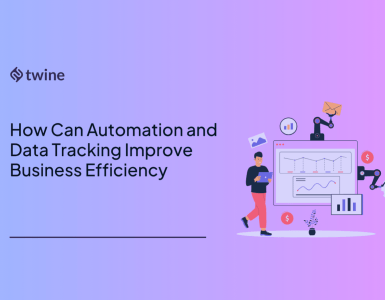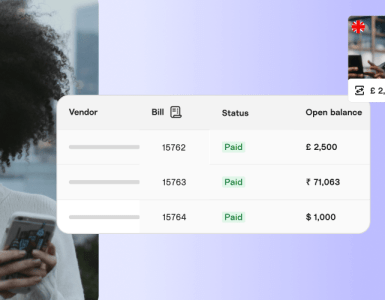As a freelancer, keeping track of all of your expenses and receipts in one place can be a godsend during tax season. You do not want to have to thumb through every money-related email last minute. It would be far more ideal if you had everything you needed in one place.
If you are like most freelancers, you have multiple sources of income you need to report and multiple business expenses that are eligible for deductions. Some deductions include office expenses, office rent (if you rent out a workspace), equipment you may use, etc.
This means that the IRS considers any expense that is exclusively helping your work progress as an office related expense. This of course does not mean you can count your living room simply because you sit there while working.
According to the IRS, if you are a self-employed individual you are generally required to file an annual return and pay an estimated tax quarterly. You will also most likely be liable to pay a self-employment tax as well which includes your Medicare and Social Security tax.
Suffice to say, understanding all of this, filling out all those forms, and knowing when to pay, and what to pay are all annoyingly confusing questions. Here is where tax apps come in. You need to be saving and earning your money in a way that supports your freelance career.
Freelancers often forget about these handy tools throughout the year when they are busy finding new clients, trying a new email marketing software, making money, and increasing their profit margins. All of these activities keep the wheels of any company moving but you do not want to be running around last minute when the tax period comes knocking.
Using the right tools and apps to handle your invoices, receipts, and tax information can make everything else much easier.
Here are 8 tax apps or tools we would suggest looking into-
1. Quickbooks
Quickbooks is amazing for freelancers who are based in the U.S. in specific. This is because Quickbooks calculates what you are going to owe in federal taxes each quarter which means you never wind up overpaying or underpaying. A couple of other features worth mentioning-
Tracking of Miles
Work related transport can be written off and used as a tax deduction. This means that if you travel for work, you could use Quickbooks’ mile tracking feature to know exactly how much you should be writing off. Their GPS tracking system allows you to track trips that you can then manually mark as business or personal.
You will then receive reports at the end that include information like the miles you have driven and how much you could potentially deduct. However, if you are getting paid for remote work , this feature might not be very important to you.
Pricing
Flexible pricing plans that favor freelancers help you save money and get the best bang for your buck. Quickbooks charges less for all of their freelance accounts as compared to their small business subscriptions.
You can connect your Quickbooks account to your bank account which will automatically register all transactions. This is a good reason why you should have a separate business account and register your company as an LLC as soon as possible. However, if your business and personal accounts are not separated just yet, you can tag expenses as personal or work related when using the Quickbooks app.
2. Freshbooks
For most people who decide to start a freelance business, a lot of their payments have set rates and it is fairly easy to send out invoices and track what is coming in. However, for a few freelancers who depend more on hourly rates or might simply have a more complex billing system, Freshbooks could be the answer they are looking for.
Some of the notable features that Freshbooks provides users include-
- Automated Reminders– Reminders let you send clients payment reminder emails so that you do not have to chase after clients that are known for being late.
- Ability to set up multiple projects for a client– You can set up multiple different projects for each client you work with which helps keep everything organized. A lot of other accounting apps do not allow this which means you need to create a whole new project instead of keeping all relevant projects under one client.
The Lite plan allows you to have 5 billable clients, track expenses, send estimates, track sales taxes, see reports, and manage payments for as little as $4.50/ per month. You can also try their services for 30 days free of charge.
The Plus plan which comes next has two notable differences- you can bill up to 50 clients and you can invite your accountant to your account. This plan is priced at $7.50. There is also a premium and made for you plan if you are looking for more features.
3. Wave
The Wave App has the bonus of allowing you to pay as you go. They do this by offering some of their services completely free of charge- accounting, invoicing, and receipts are all free. You only have to pay a payment charge to process the money that comes in.
This makes it one of the most affordable tax apps for freelancers who want the basic accounting features without the additional cost. It can work well as an app for freelancers who are just starting out and do not want to unnecessarily invest their money in an app.
4. TurboTax
TurboxTax is a great piece of software for the freelancers that want to DIY their taxes. It is owned by Intuit as well so it syncs incredibly well when used alongside Quickbooks, also created by Intuit. So, if you want to file your taxes online there are essentially two options-
1. DIY-ing it- To start with you have to answer a few questions through which TurboTax will do the math and calculate what you owe. You can then take a picture of your W-2 form from which TurboTax will pull information and fill up everything for you. They also run error checks every step of the way and double check as you go. Here is what pricing looks like depending on what you are looking for-
Freelancers can use the software to file taxes for as little as $120 which, as anyone knows, is far cheaper than hiring an accountant.
2. Turbo Tax Live- If you do not want to trust software to do the job for you, you could go for the live option that would include a CPA or EA taking a look at your return and reviewing it before you file.
5. Bonsai Tax
Bonsai Tax helps freelancers calculate their estimated tax, sends them filing date reminders, and even helps keep track of expenses and proposals that are coming in. It also helps you identify potential tax write-offs you might be missing.
Once you go to the accounting section on your Bonsai dashboard, you will see a breakdown of your expenses and income that you can manually add or import from your bank account app. This is a good way to track any passive income you may receive (this is especially true for freelancers that own blogs or get paid a certain amount every month from affiliates).
The great part about using Bonsai as a freelancer is that it has a range of tools that work well alongside each other- most of which every freelancer uses. Some of these include proposals, contracts, invoicing, and time tracking. It is a great all-in-one solution.
There are two pricing options to choose from-
- Workflow( $19/ Month)– This one includes invoices, projects, proposals, invoices, payments, time tracking, and the availability of their app to use as well.
- Workflow Plus ($29/ month)– The higher tier option includes everything included in Workflow as well as a few other extras such as workflow automation and priority support.
6. Expensify
Expensify is a receipt and expenses app that is available on the Apple app store as well as the Google Play store. You can use it to scan receipts, track mileage, and create expense reports by syncing it with your bank app. It will also allow you to categorize, group and tag expenses to create a report.
You will get 25 free receipt scans in a month after which you can select one of their insanely affordable pricing models-
7. Shoeboxed
Shoeboxed is a pretty straight forward app that helps you keep track of expenses so you can then pass on all of the information to an accountant at the end of the year. They allow you to scan receipts through their app, forward receipt emails to your account by syncing your Email account with them, and more.
This is essentially just a really good way of keeping track of all of your expenses no matter how the receipts get delivered to you. Once you upload a receipt, you can also categorize it as reimbursable, deductible, or I’m not sure.
Here is what the Shoebox pricing looks like-
The startup plan should be ideal for most freelancers who simply want to scan digital and physical receipts. You can essentially scan pretty much anything for future safekeeping which is why it is called shoeboxed- you do not need to store all of your receipts in a shoebox anymore.
8. FreeAgent
FreeAgent has a couple of awesome features that go beyond what most other accounting and tax apps offer. Since invoicing, payments, and accounting is already assumed, let us talk about some of the additional features FreeAgent offers-
- Automated invoicing allows you to send repeat invoices to clients that you work with on a repeat basis.
- Automated reminders help you go after late paying clients without the manual effort and stress.
- FreeAgent is perfect for freelancers that work with estimates of the final cost. You can create estimates with any one of their templates. You can then also compare future invoices alongside the past estimates to see which clients wound up being the most profitable.
Apart from this, you have the usual receipt scanning, time tracking, and syncing with bank account features that come with most accounting and tax apps.
For new customers, you will start by paying $10 per month for the first 6 months and then just $20 per month thereafter. You also get the first 30 days free.
Wrapping it up
Tax season can be stressful for newbie freelancers who are just trying to figure out how to fill a 1040-ES form (or what one of those bad boys even are and why they sound like a Star Wars character).
Whether you run an eCommerce business, a freelance graphic design company, or a link building service; you are not the only one who needs to know whether your business is making a profit or loss, what your profit margins look like, and what your business expenses are. This is exactly why having a piece of software that you pay less than $50 a month for can be the best business expense you pay for in the long run.















